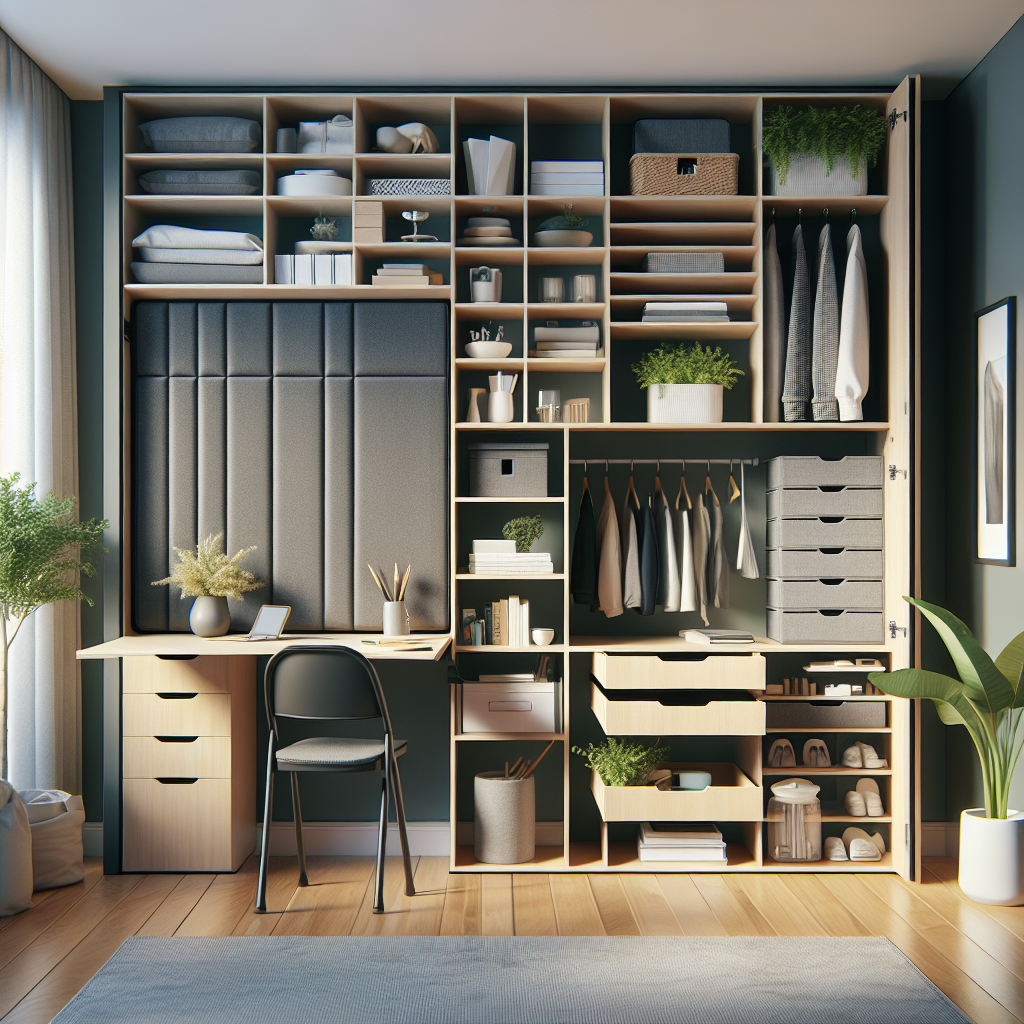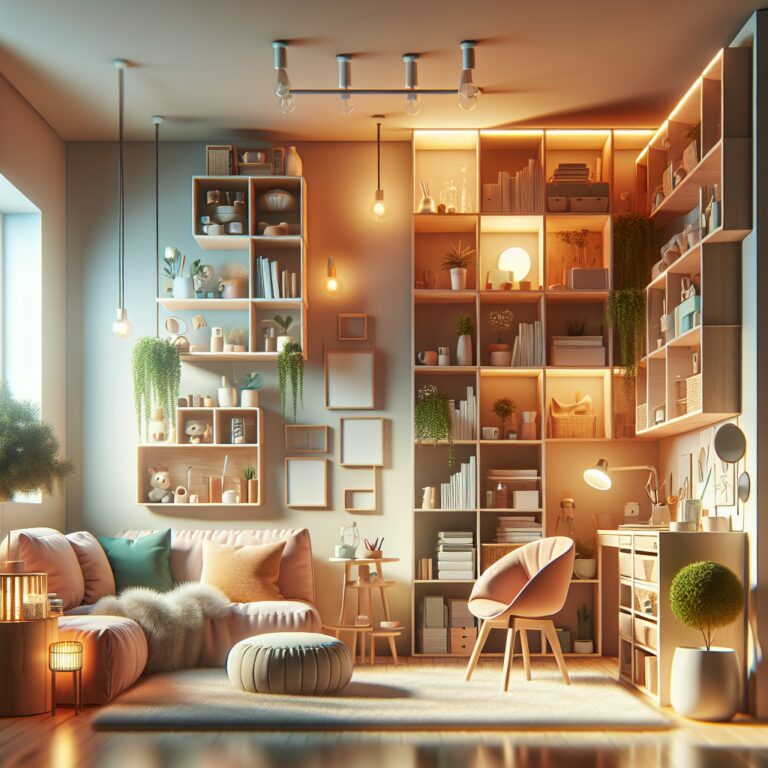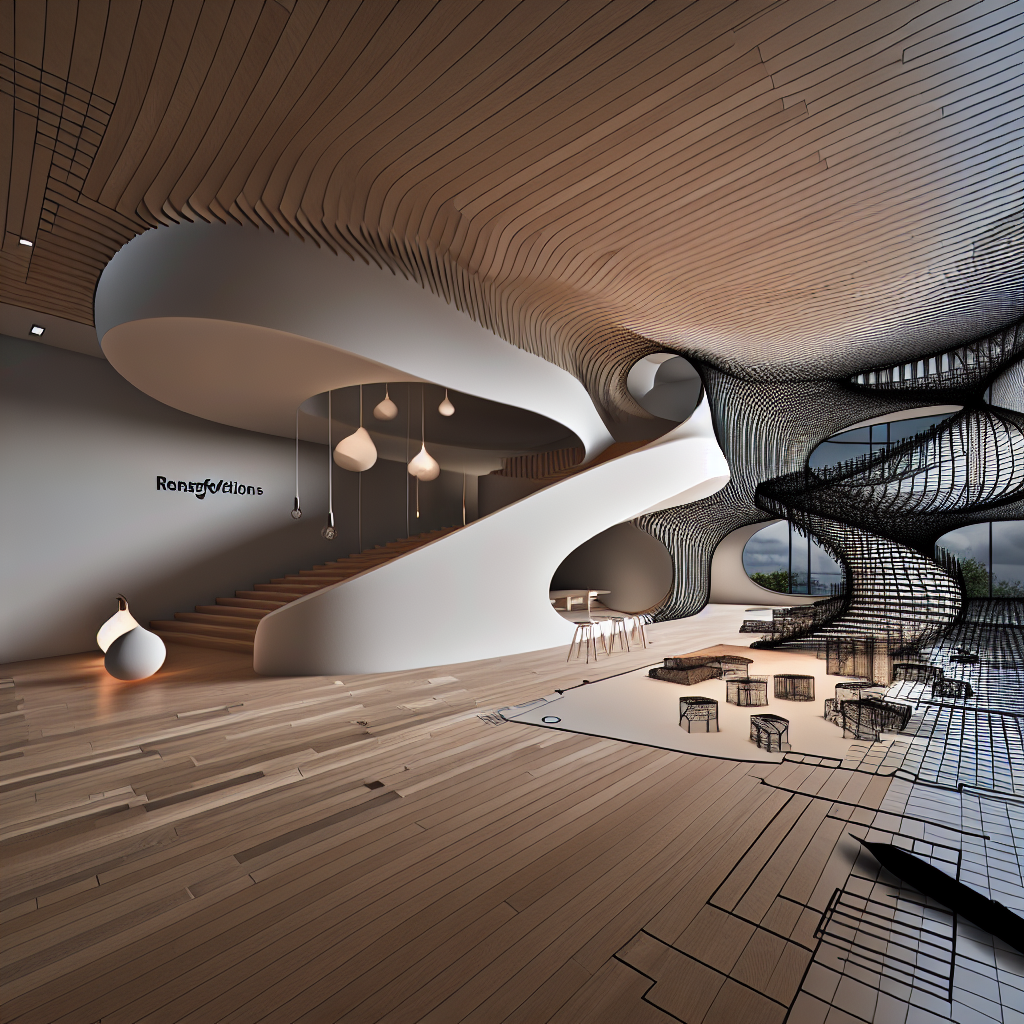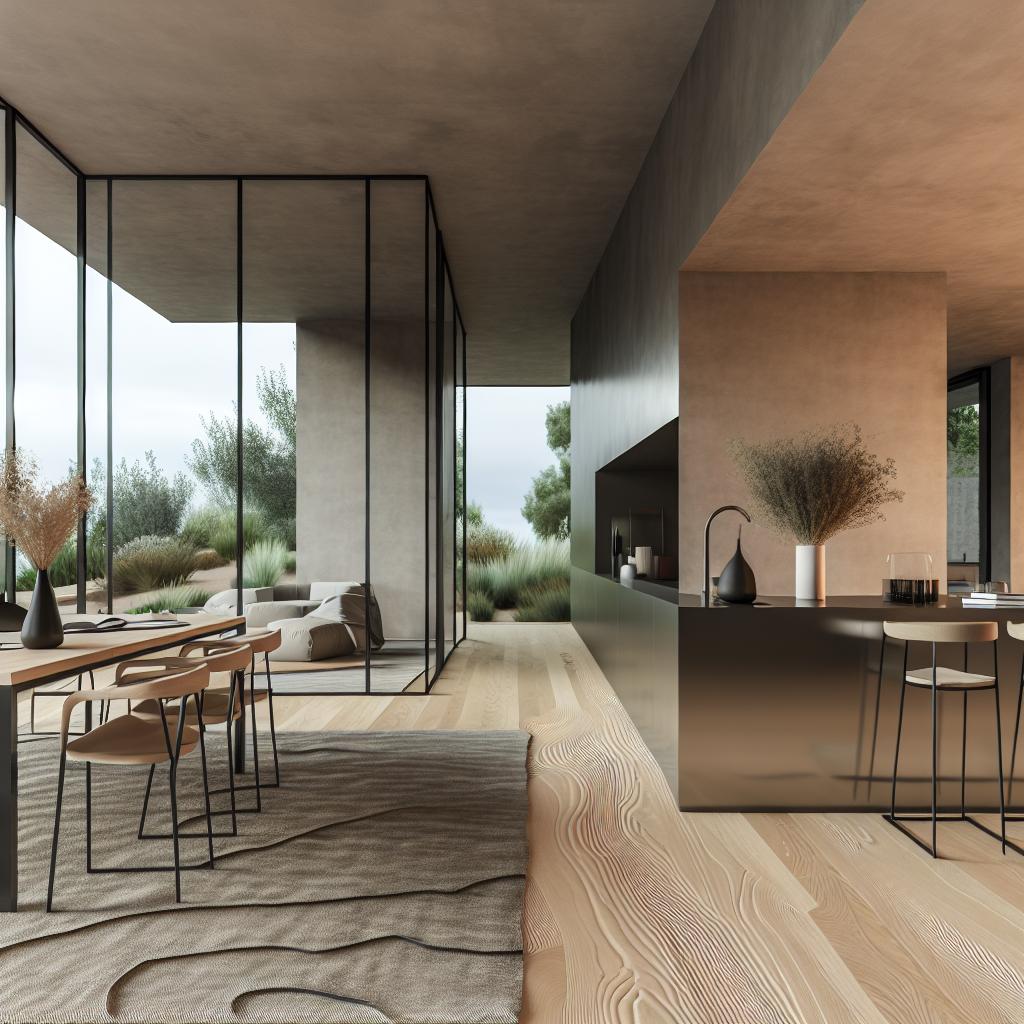Living small doesn’t mean sacrificing style or functionality. As urban spaces shrink and housing costs soar, many of us find ourselves navigating the challenges of compact living. That familiar frustration of not having enough room for your belongings—where kitchen appliances compete for counter space and clothing seems to multiply beyond closet capacity—is a modern dilemma. But within these constraints lies an opportunity to reimagine your relationship with space through creative storage solutions that transform cramped quarters into thoughtfully organized sanctuaries where everything has its perfect place.
*Small spaces demand big thinking—where every inch serves a purpose and clutter surrenders to clever design.**Where creativity meets constraint, the smallest spaces reveal our greatest organizational potential.*
I remember the first time I walked into my 380-square-foot studio apartment. The excitement of independence quickly collided with the reality of limited space. Where would all my belongings go? How could I make this tiny box feel like home without being swallowed by clutter? If you’ve ever stood in a small living space feeling overwhelmed by its limitations, you’re not alone. The good news? Small spaces don’t have to mean small living—they simply invite us to be more intentional about how we organize our belongings.
The Psychology of Small Space Living
Living in a compact space isn’t just a physical challenge—it’s a mental one. When our surroundings feel cluttered, our minds often follow suit. Research shows that organized spaces can reduce stress and anxiety while improving focus and productivity. That’s why smart storage isn’t just about finding places for your stuff—it’s about creating a space that supports your mental wellbeing.
The most successful tiny space dwellers embrace a mindset shift: viewing constraints as opportunities for creativity rather than limitations. When every square inch matters, you become more discerning about what deserves a place in your home. This intentionality often leads to surroundings that better reflect what truly matters to you.
Foundation Principles for Small Space Organization
Before diving into specific solutions, let’s establish core principles that will guide your small space transformation:
The Vertical Advantage
In limited square footage, the often-overlooked vertical dimension becomes your greatest ally. Think of your walls as untapped real estate waiting to be developed. From floor to ceiling, these surfaces offer storage potential that doesn’t consume precious floor space.
Consider your walls as organizational canvases where shelving, hooks, and mounted solutions can transform dead space into functional storage. A single wall-mounted bookshelf can free up floor space equivalent to a bulky bookcase, while adding visual interest to your room.
Multi-Functionality as a Design Philosophy
When space is limited, single-purpose items become luxuries you can rarely afford. The solution? Embrace furniture and accessories that serve multiple functions. This isn’t just practical—it’s a design philosophy that celebrates ingenuity.
Look for pieces that work harder so you don’t need as many of them. A coffee table with built-in storage, a sofa that transforms into a guest bed, or a dining table that doubles as a workspace—these multi-tasking elements allow you to do more with less.
The Decluttering Mindset
Even the cleverest storage solutions can’t solve the problem of simply having too much. Intentional curation of your belongings is perhaps the most powerful small space strategy. Before investing in storage systems, invest time in thoughtfully determining what deserves to occupy your limited space.
Ask yourself these questions about each possession:
- Have I used this in the past year?
- Does it serve a practical purpose that nothing else does?
- Does it bring me genuine joy or has significant sentimental value?
- If I were moving tomorrow, would I choose to pack and bring this?
This isn’t about living with nothing—it’s about living with what matters most to you. Remember, every “no” to an unnecessary item is a “yes” to more breathing room in your home.
Room-by-Room Storage Solutions
Let’s explore creative storage ideas tailored to specific areas in your small living space:
Entryway: Your First Line of Defense
The entryway, however small, serves as the threshold between the outside world and your sanctuary. Without thoughtful organization, this space quickly becomes a dumping ground for everyday items.
Transform this area with:
- Wall-mounted mail sorters with key hooks underneath
- Narrow console tables with baskets underneath for shoes
- Over-the-door organizers for seasonal accessories
- Floating shelves with decorative bins for small essentials
Even the smallest entryway can manage the daily influx of items when properly organized. The key is creating designated homes for recurring items like keys, mail, and bags so they don’t migrate throughout your space.
Kitchen: Maximizing Minimal Square Footage
Perhaps no room challenges small-space dwellers more than the kitchen, where appliances and specialized tools compete for limited real estate. The secret to a functional small kitchen is prioritizing accessibility for everyday items while finding creative homes for occasional-use tools.
Consider these space-maximizing kitchen solutions:
- Magnetic knife strips and spice racks on walls
- Tension rods under sinks to hang cleaning bottles
- Stackable, uniform food storage containers
- Pot lids organized in a file organizer
- Command hooks inside cabinet doors for measuring cups
Remember that vertical thinking: the inside of cabinet doors, the sides of refrigerators, and the space above cabinets all offer storage possibilities that don’t consume counter space.
Living Area: Dual-Purpose Furnishings
Your living area likely serves multiple functions—relaxation space, entertainment center, perhaps even dining room or home office. Here, multi-functional furniture isn’t just helpful—it’s essential.
Invest in pieces like:
- Ottoman storage benches that hide blankets and media
- Coffee tables with lift-tops that convert to work surfaces
- Sofas with storage compartments beneath cushions
- Nesting tables that can be separated when needed
- Media consoles with closed storage for unsightly items
The most successful small living areas maintain visual openness while concealing necessary items. Consider the sight lines in your space—what do you see when you first enter? Prioritize keeping these views uncluttered to create a sense of spaciousness.
Bedroom: Sanctuary of Serenity
Your bedroom should serve as a restful retreat, which becomes challenging when it must also house your wardrobe and possibly other life essentials. The bed itself represents the largest piece of furniture but also offers significant storage potential.
Optimize your sleep space with:
- Platform beds with built-in drawers
- Headboards with hidden compartments
- Under-bed storage containers on wheels
- Over-door shoe organizers (which can store more than just shoes)
- Bedside tables with drawers rather than just surface space
For clothing storage, think beyond the traditional dresser. Vacuum-sealed bags can store off-season clothing in a fraction of the space, while cascading hangers multiply your closet’s capacity without requiring additional rods.
DIY Solutions for Personalized Storage
Custom storage solutions often best address the unique challenges of your specific space, but custom doesn’t have to mean expensive. Consider these budget-friendly DIY projects:
- Repurpose wooden crates as modular shelving
- Transform tension rods and baskets into adjustable closet dividers
- Create under-shelf baskets with wire baskets and hooks
- Build a pegboard wall for customizable tool or accessory storage
- Convert an old ladder into a leaning bookshelf
The beauty of DIY solutions lies in their adaptability to your exact needs. Measure carefully, plan thoroughly, and don’t be afraid to iterate as you learn what works best for your habits and space.
Technological Innovations for Small Space Storage
Modern technology offers solutions our space-challenged ancestors could only dream about:
- Hydraulic lift furniture that transforms with minimal effort
- Motorized overhead storage systems that lower when needed
- App-controlled organization systems that track your belongings
- Digital solutions that eliminate paper clutter
While some high-tech options represent significant investments, others—like apps for digitizing documents or smart home systems that eliminate the need for physical remote controls—offer affordable ways to reduce physical items in your space.
Maintaining Your Organized Space
Creating organization is one challenge; maintaining it is another. The key to lasting organization is designing systems that work with your natural habits, not against them. The perfect storage solution is one you’ll actually use consistently.
Establish these habits to preserve your newly organized space:
- The one-in-one-out rule: For every new item that enters, another must leave
- The 10-minute daily reset: A brief daily straightening prevents major cleanups
- Quarterly reassessment: Regularly evaluate if your systems still serve your needs
- Mindful acquisition: Before any purchase, consider where the item will live in your home
Remember that organization isn’t a destination but a continuous process. Your needs will evolve, and your systems should adapt accordingly.
Living small doesn’t mean living less—in fact, many find that thoughtfully organized compact spaces lead to more intentional, satisfying lifestyles. By embracing vertical thinking, multi-functionality, and careful curation, you can transform even the tiniest space into a home that feels both spacious and deeply personal. What small space storage challenges are you tackling first?Your home’s design is more than a backdrop—it’s a canvas for self-expression. From the ceiling that frames your perspective to the walls that hold your stories and the facade that greets the world, every element shapes the energy of your space.
Now, step back and reimagine your surroundings. What stories do you want your space to tell? Share your vision in the comments, or take action today by transforming one corner of your home into a reflection of your dreams. The power to design a life you love starts with the spaces you inhabit—dare to make them extraordinary. ✨




